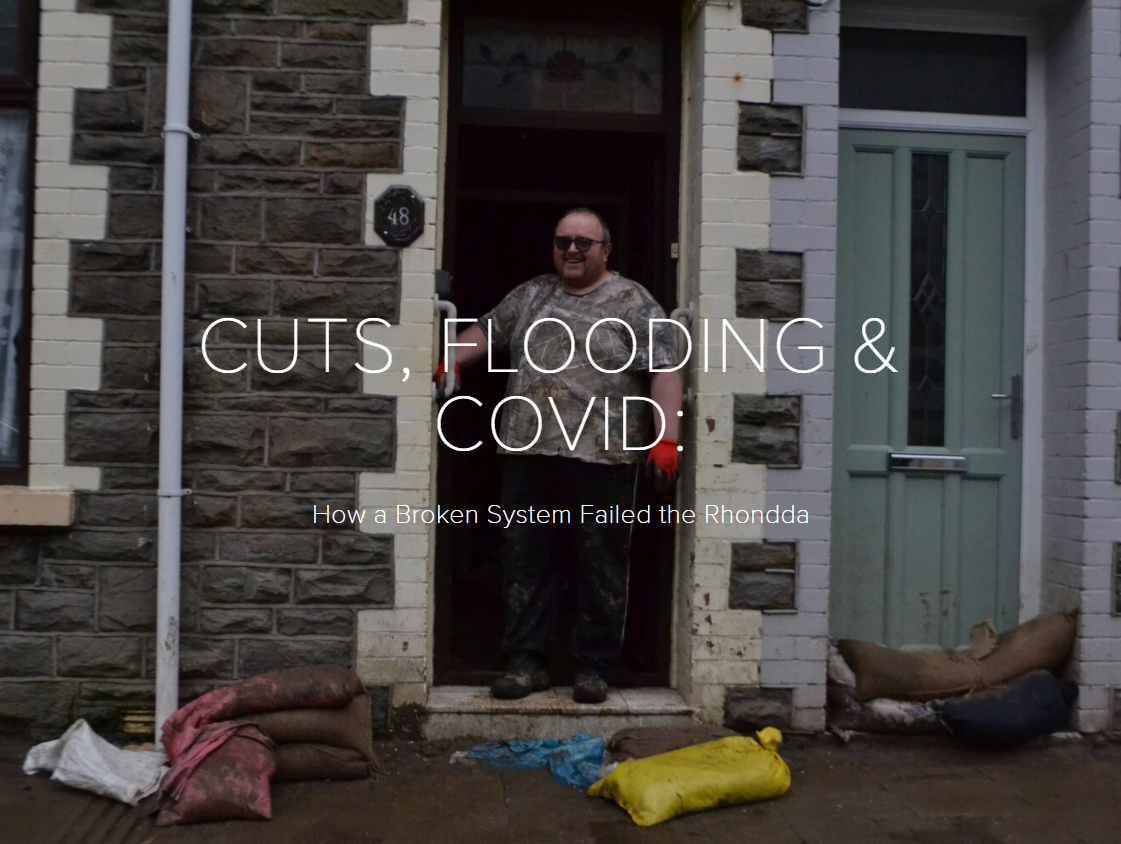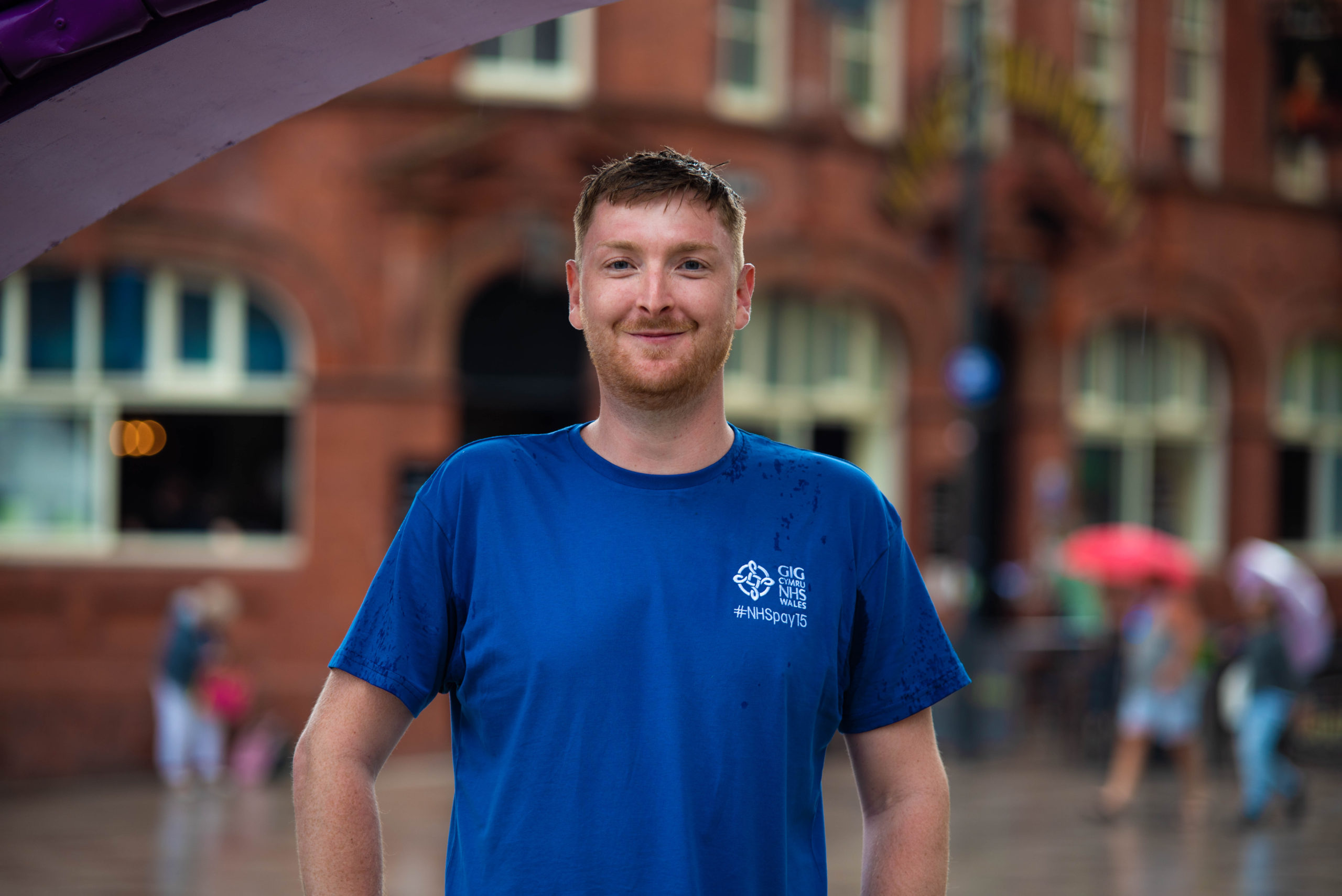
Stunning Hospital Win Proves Cuts and Closures Are Not Inevitable
CAMPAIGN INVOLVES THOUSANDS OF PEOPLE AND DEFEATS PROPOSAL TO CLOSE ROYAL GLAMORGAN A&E
VICTORY TURNS THE TIDE ON YEARS OF AUSTERITY AND SHOWS HOW CUTS CAN BE DEFEATED IN THE AGE OF CORONAVIRUS
By SC Cook – Campaign chair Len Arthur addresses a demonstration outside The Senedd in February. Image: SC Cook
People, workers and campaigners in the valleys have been celebrating a huge victory, as it was confirmed on Monday that the Accident & Emergency department at the Royal Glamorgan Hospital will stay open as a full, 24 hour service. In the end, there was no compromise or bitter pill to swallow – this was a clear and decisive win, a rarity in disputes like this.
That emergency cover is being retained in full is down to the mass mobilisation of thousands of people from across the Cwm Taf area. In the course of the campaign – which began in January – huge crowds have packed into meetings or attended demonstrations, passionately telling their own stories of how the A&E and its workers saved their life or prevented them suffering from terrible injuries.
Over 25,000 people signed a petition which was handed into Cwm Taf health board last Thursday. Online, over 22,000 joined a Facebook group aimed at coordinating the campaign.
Trade unions including UNISON, Unite, the GMB and the BMA joined the campaign, as did Members of the Senedd and MPs from various political parties. Even a local coach company, Edwards Coaches, played a key role in providing free transport to protests and lobbies.
At the heart of it all, however, was the determination of ordinary people who, under the leadership of the Save Royal Glamorgan A&E campaign, refused to accept the logic of cuts and closures which have blighted working class communities for decades. Instead, they fought back and won, and now their campaign serves as an inspiration to others.
“The victory is totally down to what can only be described as an uprising by the people and communities of the Rhondda, Cynon, and Ely valleys in central South Wales,” says Len Arthur, Chair of the campaign, writing in a blog post this week. “The campaign, by being completely open and accountable to all,” he wrote, “was able to help give voice to people’s anger, sustain the momentum and help involve the trade unions and cross party political support so that like a jigsaw, all the pieces fell into place.”

The root cause of the crisis, Len Arthur says, was “the cumulative effects of over 10 years of austerity cuts…The Tories and Liberals made the cuts as the coalition; Labour Welsh Governments implemented them, arguing we now live in ‘hard times’ and have to do our best; Plaid abstained from voting on budgets to let the cuts go though.”
In the case of Cwm Taf health board and neighbouring NHS authorities, these cuts manifested themselves in the notorious South Wales Programme. Implemented by current First Minister Mark Drakeford when he was in charge of health in 2013/14, the programme rationalised provision across the South, effectively cutting services as a means of saving money, justified by Drakeford at the time by saying “we have to live in hard times.”
In the case of Cwm Taf, this manifested itself in what became a recruitment crisis, and reached breaking point in December 2019 when the number of consultants and doctors dropped to unsafe levels, with patients having to be transferred to other emergency departments.
“Over the last six years the A&E has been gradually run down by not replacing consultants as they leave and increasingly relying on locum doctors,” says Len Arthur. “Clearly the intention was to reach the crisis point and then use safety as the argument to implement the downgrading.”
What the Health Board didn’t anticipate, Len says “was the massive and unprecedented local opposition from every section of the local community.”
Len Arthur describes how a demonstration of 400 was held at a meeting of health officials immediately after plans for closure were announced, writing: “The Health Board meeting was held in virtually occupied conditions.”
Following the confirmation that the A&E unit had been saved, Dr Nick Lyons from Cwm Taf health board admitted that campaigners had played a huge role in keeping it open.
A major turning point came in February, when large crowds from the valleys descended on the Senedd in what was one of the biggest ever protests outside the Welsh parliament.

There was real anger not only at the prospect of losing emergency cover, but specifically at first minister Mark Drakeford and health secretary Vaughan Gething. After years of cuts, the prospect of a Labour administration overseeing an A&E closure would have been the final straw. Many people in Welsh Government must have seen the writing on the wall.
The Covid pandemic has put the need for the NHS centre stage and many thought this might rule out closure, but the future of the A&E has hung in the balance even throughout the pandemic.
Sara Head, a former Paralympian and community volunteer from Beddau, who has been involved in the campaign, told voice.wales what the victory means.
“In such a difficult year with the pandemic we all needed to hear some fantastic, positive news.” she told us. “I am so overwhelmed with the result and I speak for many feeling the same. Many thought it was lost. We are all ecstatic.”
She said that it was a victory shared with workers at the hospital and A&E department. “Everyone in the campaign and around the valleys were celebrating yesterday.”
When asked how the campaign had been so successful, Sara responded: “It’s being in the fight together. The stories and passion from the meetings that were held with the community, the protests, the cross party political support, trade union support and the petitions.”
Sara said that throughout the battle, the impact on other A&Es if Royal Glamorgan closed has been crucial.
“We fought for all 3 A&Es [In Cwm Taf], knowing to lose one would have a huge impact on the others…We wanted to put real people’s stories across…they realised how much it was needed.”
The lessons go far and wide. Tory chancellor Rishi Sunak is under huge pressure to find savings through a post Covid wave of austerity which would hit communities in the valleys and beyond with yet more cuts.
If the last ten years are anything to go by, people cannot rely on the Welsh Labour government to protect them or fight back against the Tories to save jobs and services.
The government will no doubt try to push the cost of the Covid crisis onto working class people, even as Britain remains one of the richest countries in the world with huge levels of wealth inequality. According to Oxfam, the richest 1% of the UK population own more than 20 times more wealth than the poorest 20% combined
In the coming months and years, the battle will come down to who pays for the crisis: the very richest or ordinary people.
Those who have been at the heart of this campaign and led an inspiring fightback show that the answer to that question is not inevitable. If people fight, they can win.


